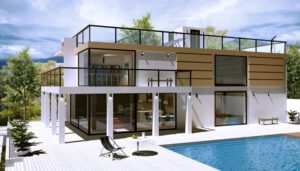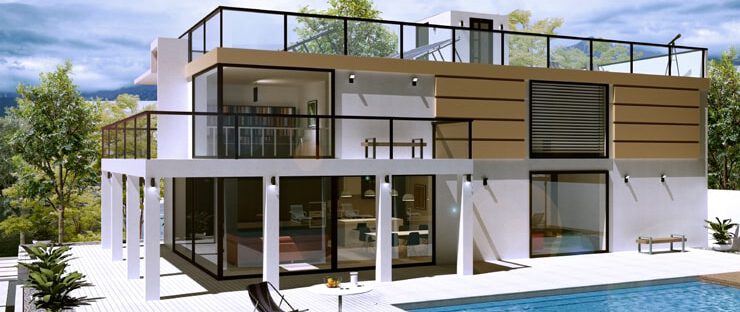Rendering Perth is the process of turning a 3D model into an image. This allows designers to visualize their designs and make adjustments before construction begins.
Renderers simulate a large range of light brightness and color, but image displays (like movie screens and computer monitors) and human perception have limited ranges. That means some details must be discarded or compressed to create realistic images.
 Rendering is more than a noun. It’s also a verb, as in “to render something.” Rendering can be used to create a drawing of what an architect’s design will look like, or it can refer to the process that gives 3D models and movies their final appearance by applying visual effects such as Gouraud shading, Phong shading, texture mapping, shadows, and reflection.
Rendering is more than a noun. It’s also a verb, as in “to render something.” Rendering can be used to create a drawing of what an architect’s design will look like, or it can refer to the process that gives 3D models and movies their final appearance by applying visual effects such as Gouraud shading, Phong shading, texture mapping, shadows, and reflection.
The earliest rendering was done through source separation, with people saving their organic waste to feed to animals or selling it to scrapyards for metal recycling. Then, in the late 19th century, cities began garbage collection, and workers separated reusable trash from that going to landfills. This helped create the foundation for modern recycling.
But even though this point established the concept of recycling, it took some time for consumers to get on board.
Some didn’t believe the practice was possible, while others were concerned about lowering their utility bills and the potential for hazardous waste to be mixed with recyclables. However, many people were on board by the 1970s when the original recycling symbol was introduced. The rest is history. Today, Americans recycle 62 billion pounds of raw materials annually through the rendering process into ingredients for pet food, biofuels, and industrial products.
In the film industry, rendering is a process that turns 3D virtual space into 2D images. These images are then combined into a movie. This is a time-consuming process and is performed by computer programs called renderers.
Renderings can be done in various styles, from simple sketches to photorealistic images. They can also be made to look like different materials, such as a hand-drawn drawing or stone. Renderings can even be made to look like they are in a certain place or time of day.
This is how the amazing special effects in major movies or automobile advertisements come to life. In addition, 3D rendering is used in architecture, real estate marketing, and furniture design. It can show prospective buyers what a finished structure will look like before it is built, saving time and money. It can also help to avoid any misunderstandings with clients.
The rendering process is complex and requires high skill to get the best results. It involves many steps, from defining the shape of objects and their colors to calculating lighting effects, shadows, and reflections. It also involves understanding the principles of photography and physics, including the Nyquist sampling theorem, which states that any spatial waveform cannot be displayed without being distorted. This is because the human eye and display devices (such as movie screens or computer monitors) can only handle a limited range of light brightness and color.
Any information outside of this range is discarded or compressed.
Besides being a vital component of the filmmaking process, 3D rendering is also used in architecture and interior design to create walkthroughs of unbuilt buildings or spaces, which can be viewed online or in virtual reality. This helps designers discover the most efficient way to layout rooms and sell their designs to customers. It can also make obtaining planning permission for new constructions easier because potential developers can show the local council what the building will look like before it is completed.
Increasingly, renderings are being used to promote sustainable living by showing how a home or office can be designed with environmentally friendly features. For example, a rendering of a house can show how solar panels can be incorporated into the roof and how rainwater can be collected and reused. Similarly, rendered fat can produce bio-based products that reduce carbon and other greenhouse gas emissions and conserve natural resources.
Whether interior designer or an architect, rendering can be a big part of your business. It can help you win projects, impress clients, and create a more realistic image of your designs. However, it can also be a time-consuming process.
Streamlining your work and efficiently using your resources to maximize your profits would be best.
One way to do this is by utilizing 3D rendering. This technology allows you to create a detailed image of your design without the hassle and expense of completing an actual photoshoot. This can save you both time and money and allow you to produce marketing material more quickly than in years past.
Rendering is a vital tool for the manufacturing industry as well. It can create intricate drawings, plans, and factory layouts. It can also be used to develop prototypes of machinery and other equipment. In the past, making these images was done by hand and was often lengthy and expensive. However, 3D rendering can save manufacturers a lot of time and money.
3D rendering is a powerful tool for the marketing industry as well. It can be used to show off a product’s features and benefits, and it can also be used in conjunction with virtual reality to provide an immersive experience for consumers. 3D rendering is a great way to create compelling and eye-catching marketing campaigns that would be difficult or impossible to produce in years past.
For example, many businesses have increased their sales of more expensive building materials and furnishings using photorealistic renderings. This helps clients visualize their finished project, encouraging them to buy more costly items.
Rendering can be very profitable if you know how to utilize it effectively. To maximize your profits, you should attract and retain more clients while staying competitive. A good way to do this is by promoting your services through social media and using renderings to highlight your work.
The word rendering can be used as a noun or a verb, and it refers to both a visualization of a design and the act of doing so. For instance, you can render someone unconscious with a blow to the head or render fat into lard. Still, in the architecture and construction management world, rendering creates a three-dimensional project visualization.
Depending on the purpose of the rendering, the style of the image can be tailored to match a specific aesthetic or create a sense of place. For example, a high-end furniture model can be rendered in a stylish living room environment to showcase its elegance. Alternatively, a 3D interior rendering can be created in a realistic setting to show how the space will look once complete.
Rendering can quickly and efficiently communicate a building concept to clients, investors, or stakeholders. Often, a client may need to become more familiar with the technical language of an architectural design, and an accurate and detailed visualization will allow them to visualize how the completed project will look. In addition, a professional rendering will enable a client to make changes to the design before it is built, saving time and money.
A rendered design can also help a client understand the environmental impact of a project. For example, a green project can reduce carbon emissions and conserve natural resources by converting waste to renewable energy or using bio-based materials that can be reused.
Another sustainable practice in rendering is the use of natural settings. This can be done using Lumion’s extensive library of trees, plants, and shrubs to create a contextual environment. The built-in library is filled with high-quality vegetation to match the geographic location of the site and can be easily customized to suit a project’s needs.
Traditionally, a manufacturer would order prototypes to test various color schemes and material combinations before investing in production. Today, photorealistic 3D product renderings can be used to make a more informed purchasing decision and avoid the need for costly prototyping.

